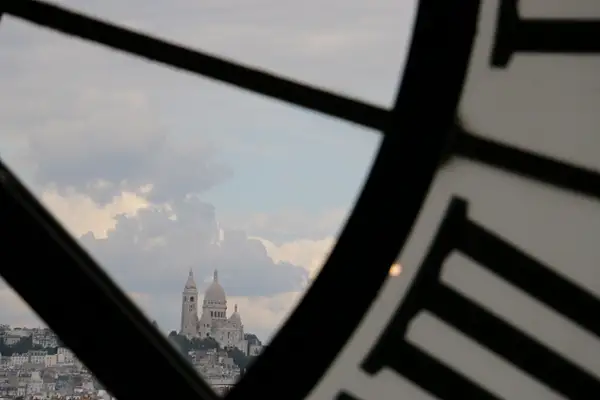


A river barge converted to a small restaurant |
Stately Notre Dame |
Detail-The Cathedral of Notre DAme |
An accordionist by the Seine-The French have a passion for Accordion
After the invention of the accordion in 1829, its popularity spread throughout the world, in no small measure due to the polka craze. "Once the polka became a craze in Paris and London during the spring of 1844, it diffused rapidly to the rest of the world. . . . In March 1844, polka-mania took Paris: common people, servants, workers and, one assumes, anyone else who wasn't too stuffy were dancing the polka in the streets of the capital and soon in Bordeaux and other French cities as well. A week or so later it took London by storm. And from these two great centers of fashion, empire, and influence, the polka diffused rapidly upward into the rest of French and English society and outward to the rest of the world."
|
Notre Dame's transcept Rose Window |
Tom on the Left Bank across from Notre Dame |
Georgia on Left Bank |
Pont au Change
It connects the Île de la Cité from Notre Dame, the Palais de Justice and the Conciergerie, to the Right Bank, at the Place du Châtelet.
|
A fine view of Notre Dame from a small park in the Latin Quarter |
Latin Quarter-A hodgepodge of ancient and more modern buildings |
An inviting and colorful eatery in the Latin Quarter |
Shakespeare and Company, in the Latin Quarter
Shakespeare and Company is the name of two independent bookstores that have existed on Paris's Left Bank.The first was opened by the American Sylvia Beach on November 19, 1919. During the 1920s, Beach's shop was a gathering place for many then-aspiring young writers such as Ezra Pound, Ernest Hemingway, James Joyce and Ford Madox Ford. It closed in 1940 during the German occupation of Paris and never re-opened. The second is situated at 37 rue de la Bûcherie (pictured here) in the 5th arrondissement. Opened in 1951 by George Whitman, it was originally named "Le Mistral", but was renamed to "Shakespeare and Company" in 1964 in tribute to Sylvia Beach's store. Today, it serves both as a regular bookstore, a second-hand books store, and as a reading library, specializing in English-language literature.The shop has become a popular tourist attraction.
|
Église Saint-Séverin
The Church of Saint-Séverin (French: Église Saint-Séverin) is a Roman Catholic church in the Latin Quarter of Paris, located on the lively tourist street Rue Saint-Séverin. It is one of the oldest churches that remains standing on the Left Bank, and it continues in use as a place of worship.
|
Church of Saint-Séverin
Saint-Séverin of Paris, a devout hermit, lived on the banks of the River Seine during the first half of the fifth century. The oratory which was built over his tomb became the site of a small Romanesque church which was built around the eleventh century. As a result of the rapidly expanding community on the Left Bank, it was decided a larger church was required. The new structure, built at the beginning of the thirteenth century in the Gothic style, had a nave with lateral aisles. An additional aisle on the south side was built in the early 14th century to accommodate the growing congregations from the nearby university.[1]
|
Organ of the Church of Saint-Séverin |